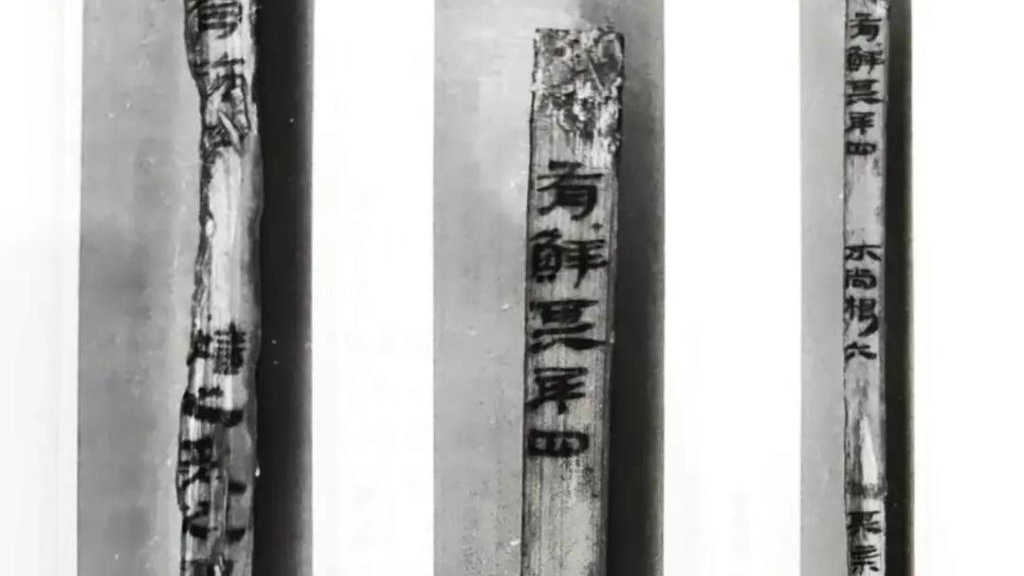
From the words in Qu Yuan's "Li Sao" "Drinking magnolias in the morning with falling dew, and dining with autumn chrysanthemums in the evening" to descriptions by Wen Zhenheng in the Ming Dynasty and Li Yu in the Qing Dynasty, magnolia has been an elegant plant since ancient times, symbolizing good fortune and harmony. Wood, and often planted in palaces, temples, etc. Magnolia is also the city flower of Shanghai. The tall and graceful figure that blooms in large areas against the cool spring breeze in March is undoubtedly the magnolia. There is an 800-year-old magnolia in Lianyungang, Jiangsu Province - its roots grow from gaps in the rocks, and its branches lean against huge rocks.
In a cultural sense, literati were in love with magnolia; at the end of the Tang Dynasty's "Pictures of Ladies with Hairpin Flowers", a single magnolia plant was sketched, just as Bai Juyi's poem of the time described it as "as greasy as a jade finger painted with vermilion... a tree of girl flowers should be added" ".
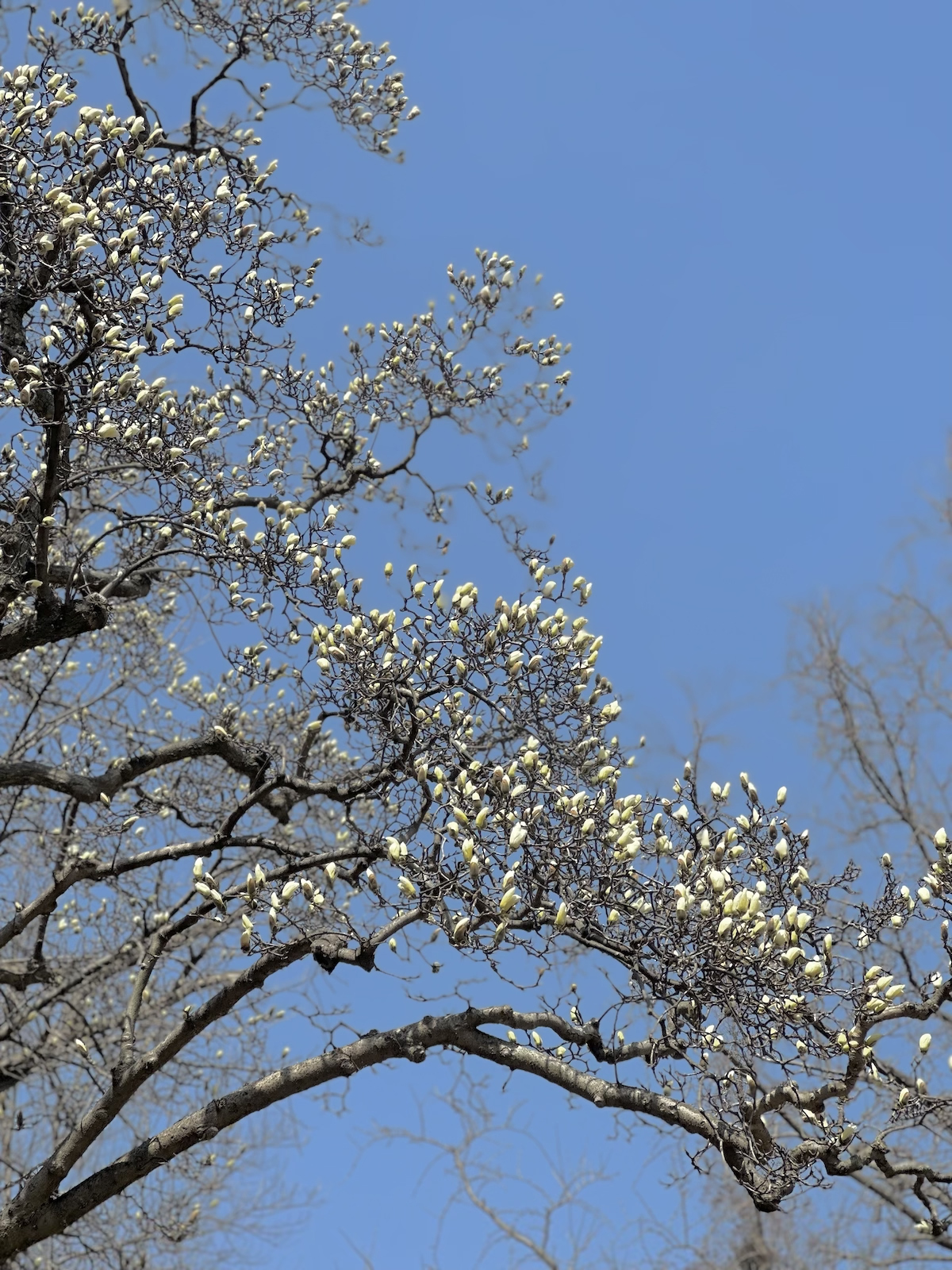
Ancient Magnolia under the blue sky
I picked up a small book from the 1980s called "Interesting Talk about Ancient and Famous Trees" at the Rhinoceros Bookstore and read it at leisure. The domestic ancient and famous trees listed in the book are all ancient plants that are over a hundred years old. The text is concise and to the point. Although no pictures are included, This sparked my interest in investigating the current status of these ancient trees. Magnolia is the city flower of Shanghai and can be seen in botanical gardens, street corner gardens, and campuses. Most of the flowers that bloom at the same time as the magnolia are small and small. In March, the tall and graceful figure that blooms in a large area against the cool spring breeze is undoubtedly the magnolia. The most basic and most limited field investigation of plants is the time node. Encounter in the season is neither early nor late. The other side of the limitation is the infinite beauty of chance encounters. Finally, one day in mid-March, we headed north along the coast.
Exploring Yanfu’s 800-year-old Magnolia
Lianyungang is located in Jiangsu. According to local chronicles, Haizhou was a battleground for military strategists. During the Qin and Han, Sui and Tang Dynasties, Southern and Northern Dynasties, Song and Jin Dynasties, Song and Yuan Dynasties, the city of Haizhou was fought over and fell. In ancient times, the Donghai Mountain area (Yuzhou Mountain, Cangwu Mountain, and Yuntai Mountain) belonged to Langya. Overseas Chinese also established Qingji Prefecture, and later Donghai County was established, so it was called "Haizhou". Donghai Mountain consists of three islands, standing in the rough sea. The words "Penghu", "Pengying" and "Yingzhou" in the poems of Li Bai and Su Dongpo are used to sing its praises.
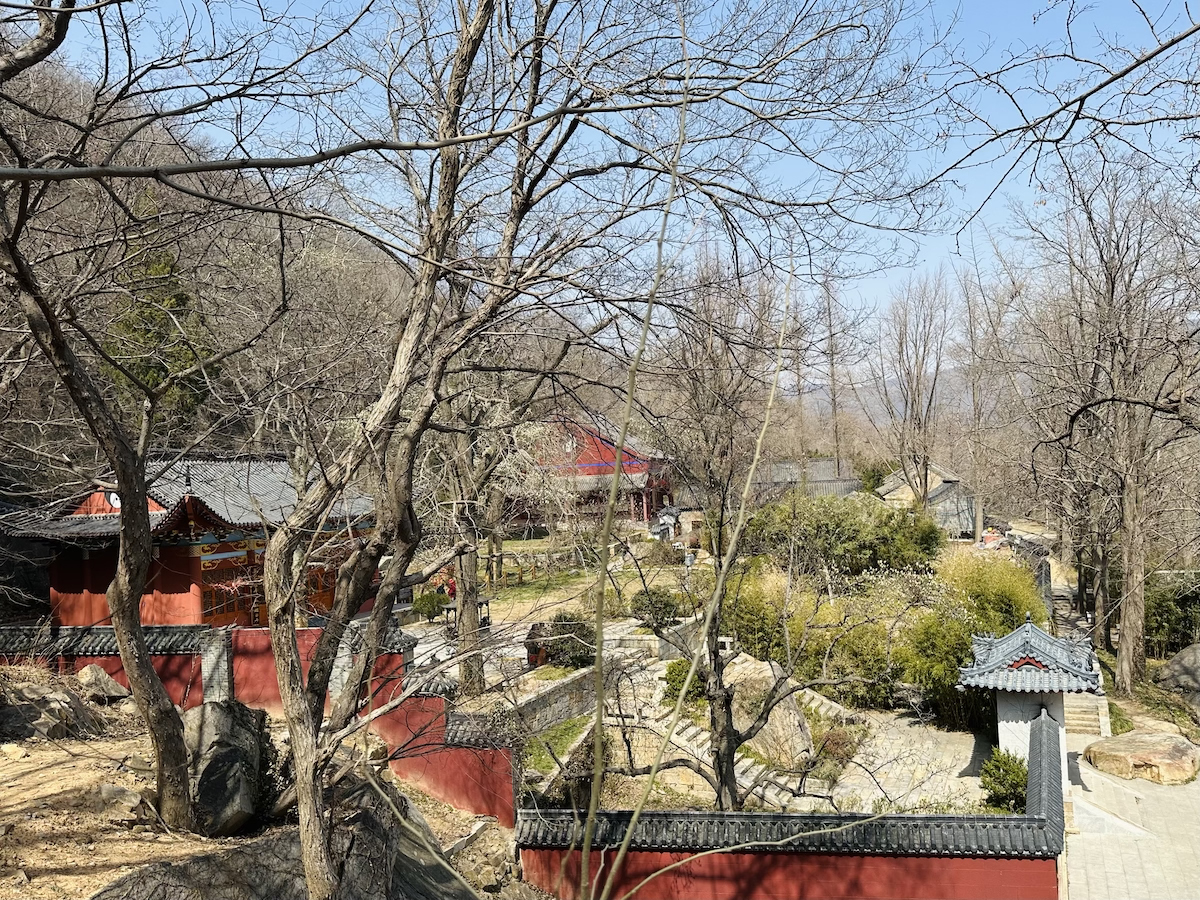
The distant view of Yanfu Mountain Gate
Yanfu Temple, where the ancient magnolia is located, is located at a corner of Yuntai Mountain, facing the sea. In ancient times, transportation was inconvenient and it was even less visited. It is expected that it has become a quiet place for meditation. Yuntai Mountain is one of the birthplaces of Taoism in my country. Taoism originated in the Han Dynasty. At first, it was banned by the court because of its heterodox teachings and was banished to the islands. It is said that when Yanfu Temple was first built, it was said that Yanfu was under the command of Liu Xiu in the Eastern Han Dynasty, or that Emperor Taizong of the Tang Dynasty visited Liaodong. There are many legends and it is difficult to verify. The more conclusive record is the content of the stone carvings of Xingxiu Nunnery: " There is an ancient nunnery inside, which dates from the Tang Dynasty. The year has been lost since the Song Dynasty. No., the years are getting farther and farther, but the foundation is still dilapidated ." It also clearly records that Qin Yu funded the construction in the Gengchen year of Wanli in the Ming Dynasty (1580). It was later rebuilt in the fourth year of Chongzhen (1631) and the nineteenth year of Guangxu (1893) of the Qing Dynasty. The time when the ancient magnolia moved in was about the third year of Hongwu in the Ming Dynasty (1370) when Zizhou Taoist transplanted it. During the Wanli period, the Guanyin Hall was demolished and Yanfu Temple was built. The Magnolia Mountain House, which is separated from the original south side hall by a wall, was built by Taoist priest Lingxiao during the Kangxi period. There is a small door inside that connects to Yanfu (see "Yuntai Range Rover" compiled in 1999). It can be seen that during a long historical period, this building Buddhism and Taoism are mixed together, and palaces and houses coexist.

Yanfu Temple Architecture
The time node for magnolia implantation is basically clear. The origin of the construction of "Magnolia Mountain House" is closely related to the existence of magnolia. Although the Buddhist temple and Taoist temples have been changed several times, the magnolia trees in the courtyard have remained standing for thousands of years. I can't help but sigh at the majesty of nature and the vitality of plants. quality. The ancient magnolia in Yanfu is ancient and strong. It is 800 years old. Its branches are covered with thousands of flowers. The branches sway in the wind and the mountain path is deep.

White Magnolia in front of Guanqian
When you arrive at the temple, you walk for a while on a stone road. There are vivid stones on both sides, mixed with various forest trees. Although the goddess of spring is staggering, most of the trees are still withered. The trees in the forest are in various shapes, and the rocks are intertwined and intertwined. , the lingering stone forest. On the low ground of the Taoist temple, the exterior walls are red, and two magnolias are already blooming with tight buds, as if waiting for the gentle hand of the goddess of spring to touch before letting go of the soft petals, but the warm white color occupies the finishing touch in the scenery. . The heights are scattered, the distance is high, the buildings are gardens, the mountains are rising and falling, and it is a perfect landscape work. Tao Shu, the governor of Liangjiang in the Qing Dynasty, wrote this sentence after visiting Yanfu Temple: "Strange rocks stand like human flowers, and immortals come like cranes and bamboos." Spanning two hundred years of time and space, this situation and scene are still the same as before.
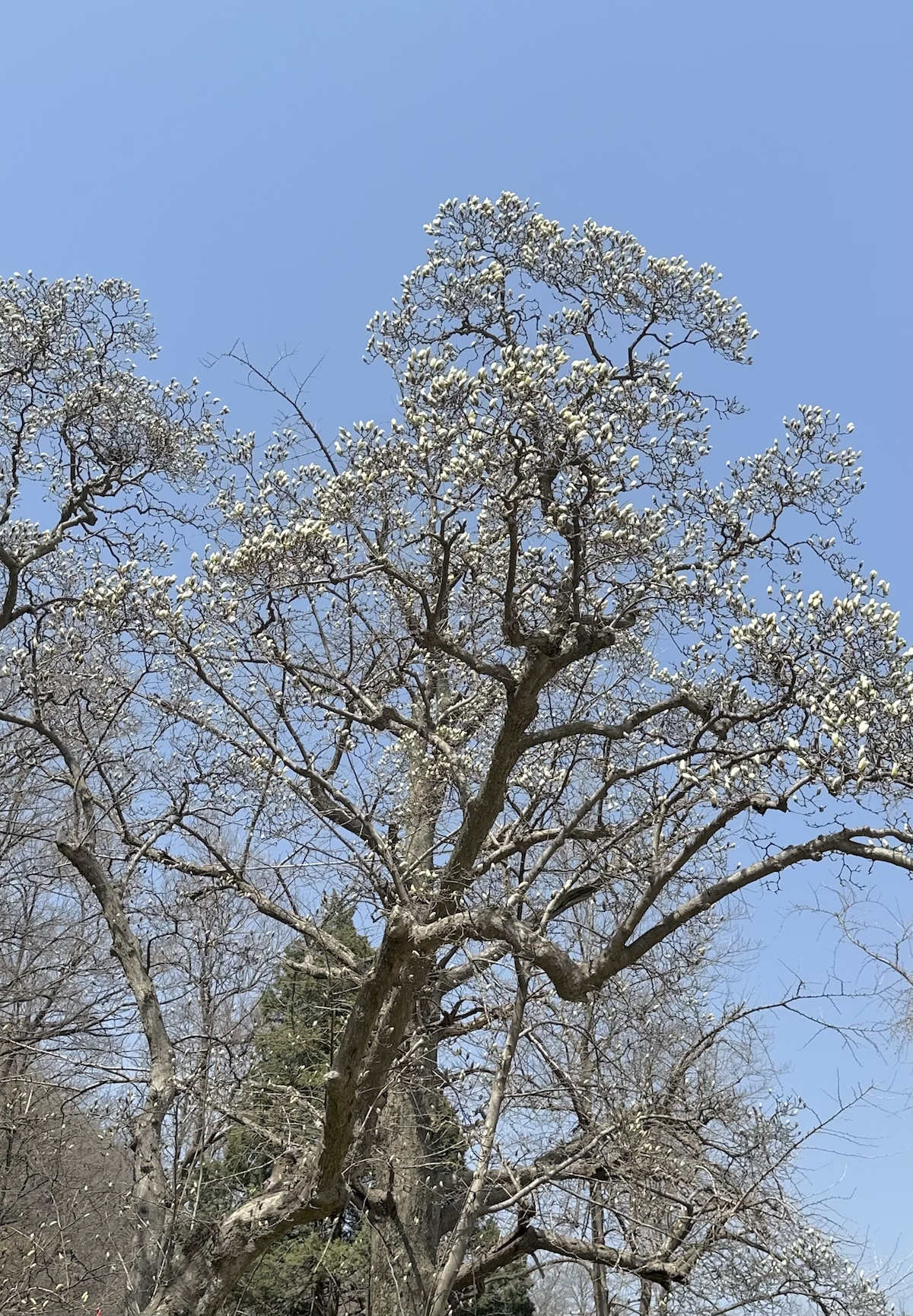
The ancient magnolia tree is in bud
Walking under the tree, looking up to admire the flowers, the buds are tightly locked, the thin yellow-green hairs on the stems are trembling slightly in the wind, and a few birds occasionally fly by in the blue sky. The two magnolias are tall and straight. The one near the view is growing vigorously and has an astonishing number of buds. Although they are not fully open, they are impressive. It is hung with a blessing red ribbon, which reminds me of the saying about plants being pampered. It probably means that attention increases and it grows stronger. Although the one in front of the courtyard wall is not as strong as the one in front of the palace, it is still elegant and graceful. It is quiet and beautiful by itself, very much like the magnolia plant in Shen Zhou's works. Ishida wrote in his own poem "Zhilan Yushu": " Magnolia branches are tall, and orchids emerge from deep valleys. They grow. Although they are different, their smells are fragrant. " Shen Zhou also wrote a poem in his sketch book "Inscribed on Magnolia": " The green strips are strong enough to attract the wind, and they break the fragrance of silver, jade and snow. Yun friends know that they are well-intentioned, and they undress their white clothes with ease through the curtain. . " Qianlong also had an inscription: " There is no depiction in the appearance, but there is spirit in the light. It is upright and rhyme, and the youth does not borrow spring. It is clearly called a wooden pen, and the portrayal is passed down to others. " It is said that the two trees are both 400 years old. It is about 20 meters high and 2-3 meters in diameter.
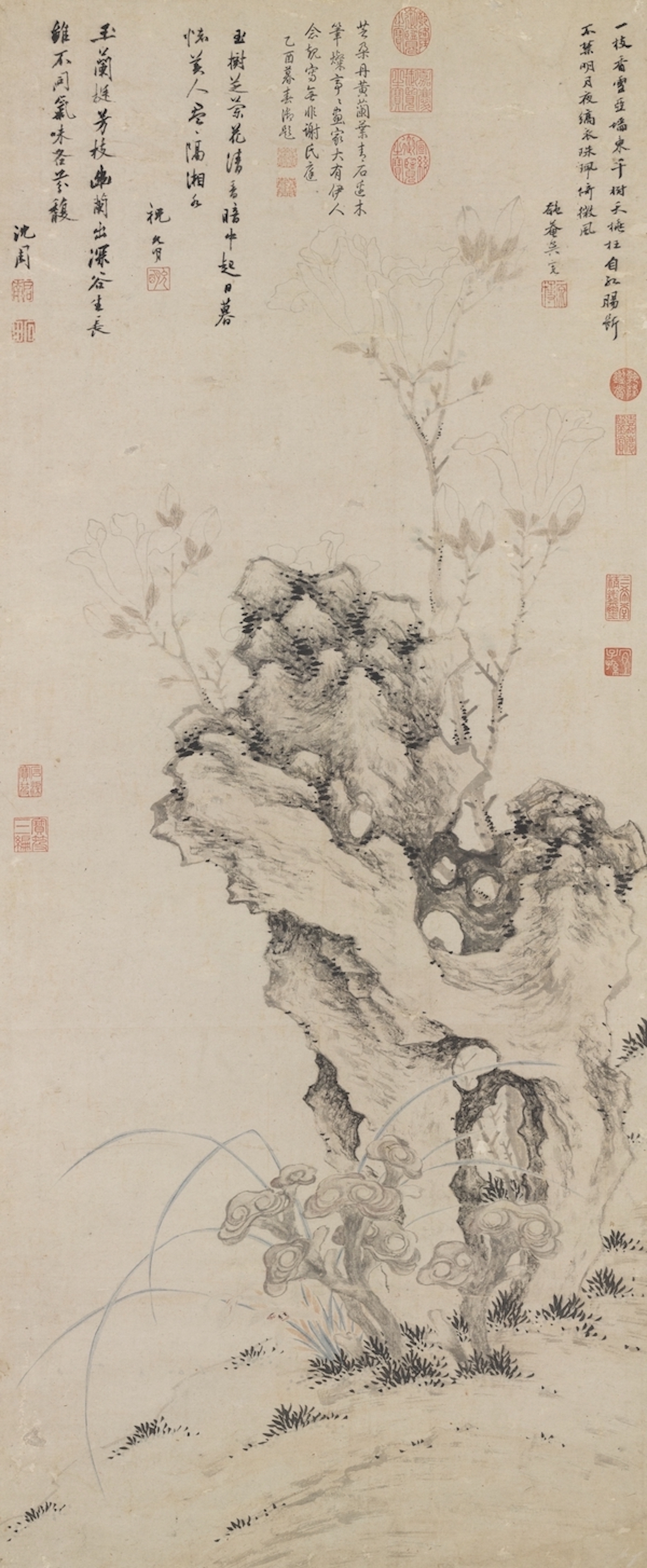
"Zhilan Yushu" by Shen Zhou, collected by the National Palace Museum, Taipei
Looking around, I couldn't see the oldest magnolia tree. Thanks to the guide from my Taoist friend, I slowly walked up the stone steps and passed by the side room of the main hall. I visited more than a dozen stone tablets along the corridor, which seemed to be old items from the original site. I passed the towering cypress trees. Metasequoia, and encountered a hot spring that was "not ice-free in the middle of winter" written in the book. There was a faint spring water pouring between the rocks, and it was clear and dripping. After passing through a bamboo forest, I suddenly discovered the ancient magnolia. What's special about it is that its strong roots seem to grow out of the cracks in the rocks, and its branches lean against the huge rocks. The whole plant tightly embraces Mother Earth, carrying the energy of nature. Climbing up the stairs and standing on a high stone back, the branches and flowers of the ancient magnolia are within reach.

Yanfu Stone Monument
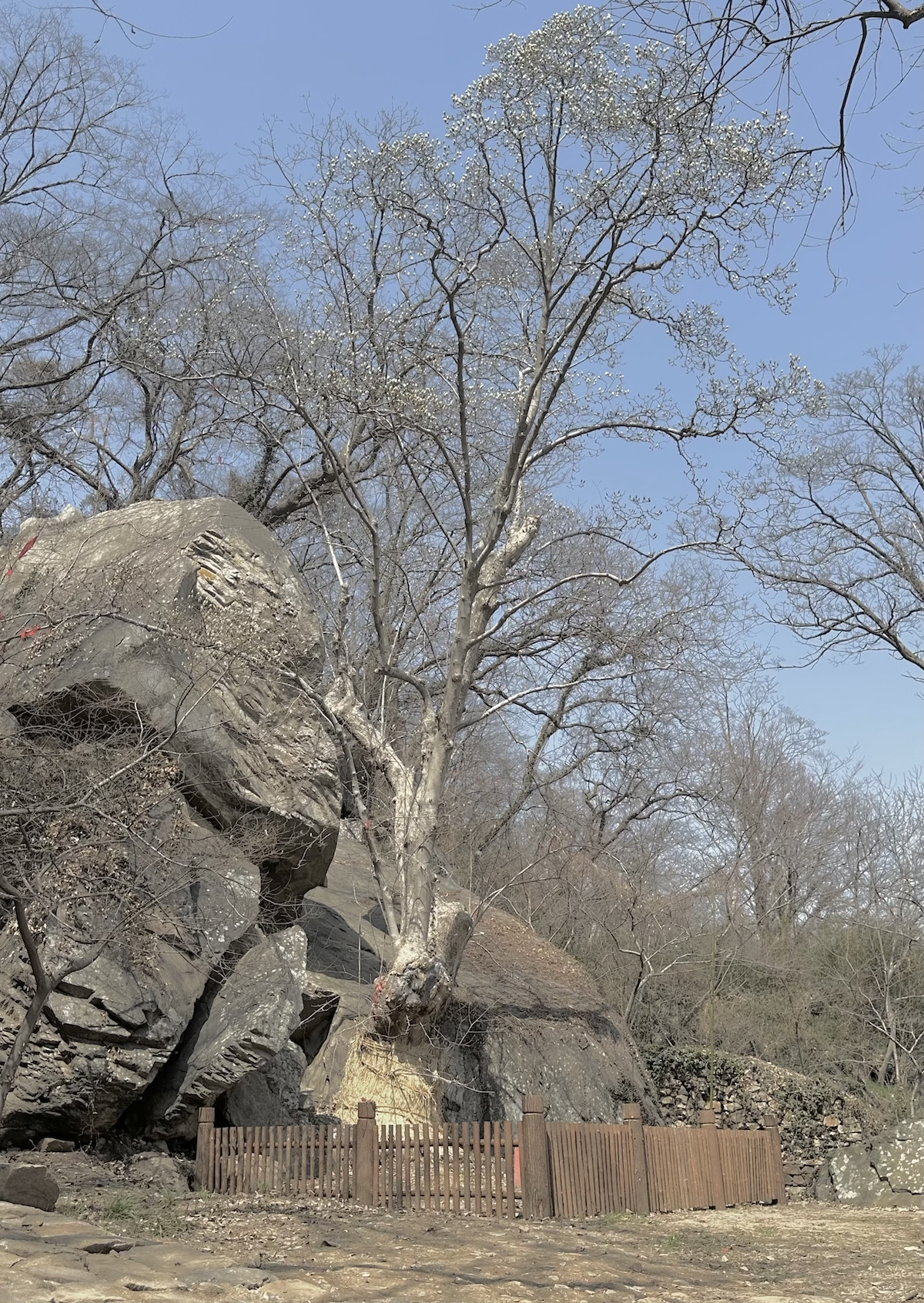
Eight hundred years old magnolia
Close your eyes and smell the magnolia. The charm of magnolia is long and clear. When I opened my eyes, I found that I was surrounded by rocks. The artificially paved stone steps disappeared, and what was left was a path between rocks. I couldn't resist the temptation of the beautiful scenery, so I worked my way up using my hands and feet. I encountered various rocks along the way, with fantastic textures, vivid colors, and sharp shapes. , just like the criss-crossing patterns of northern axes in landscape paintings. With both my psychology and equipment failing, I only climbed a short distance and turned back. When I passed by the 800-year-old magnolia again, I hugged it. My friend who was proficient in plants mentioned that it might be able to absorb energy. I just felt that my body and mind were at peace at that moment.

Magnolia branches

Real scene of trees and rocks
A brief history of Magnolia: delicate as jade, flowers bloom in a dream pen
After seeing Haizhou Ancient Magnolia, I decided to sort out a brief history of Magnolia. Looking back at the natural attributes of plants, magnolia is native to China and has been cultivated for 2,500 years. Magnolia and ginkgo are living fossils in the plant world, both belonging to the Cretaceous era. Magnolia is a deciduous tree, with branches stretching out into a broad crown; the bark is dark gray, rough and cracked; the winter buds and pedicels are densely covered with long, light gray-yellow silk hairs, and most of them bloom first and leave later. Mulan and Magnolia are of the same species. Mulan was the original name, but later changed to Magnolia. The two are used interchangeably.

plant atlas
There is another name for Xin Yi. Li Shizhen said: "Yi refers to catkin, and its buds are like catkins when they are first born, and they taste pungent." There are slight differences between the two, which are summarized as follows:

Magnolias come in white, purple, pink-purple, and yellow. Among them, purple magnolia and Erqiao magnolia are difficult to distinguish. Erqiao is known as the big and small magnolia. It is a hybrid of white and purple magnolia. It has many common characteristics. Master its best. The basic number of petals and the classification of trees and shrubs can be easily distinguished.
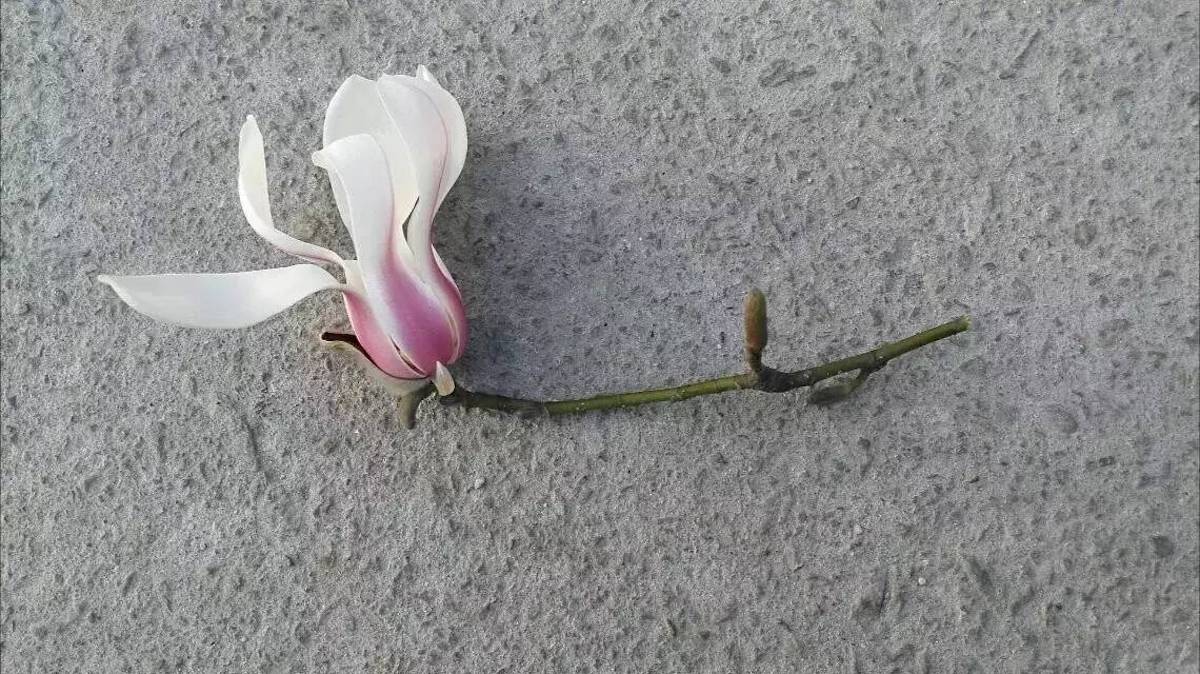
Erqiao Magnolia

Purple Magnolia of Xinyi
Wang Xiangjin's "Qunfangpu" lists the ancient Flower Moon order. In early spring, in March, " Taoyao, Ditangfen, Rose Climbing, Begonia Jiao, Li Hua Rong, Mulan Jingxiu " are in the same season, and also mentions: " Magnolia has nine petals and is white in color. " It is slightly green and tastes like orchid, hence the name. There is one stem and one flower, all covered with wood, without any soft branches...the flowers fall and the leaves are drawn from the pedicle, which is unique to other flowers. " The characteristic of flowering first and leaving leaves later is also the reason why magnolia has many flowers. An important reason to stand out among early spring flowers. Plants can be divided into flower appreciation, leaf appreciation, branch appreciation, and fruit appreciation. Magnolia is proud of its flowers. In early spring in March, gauze trees stand far away, with plain petals flying on the branches, and jade trees stand tall. Li Qunyu of the Tang Dynasty's "Two Xinyi" " Double white cranes chant wildly and dance, and the frost feathers and jade feathers fall one after another. The empty court is facing the late spring rain, but it collects the cold fragrance and hugs the Yao calyx. " Like the cherry blossoms in the same season, magnolias are in full bloom, and As for the green leaves that bloom later, they become a foil or even redundant.
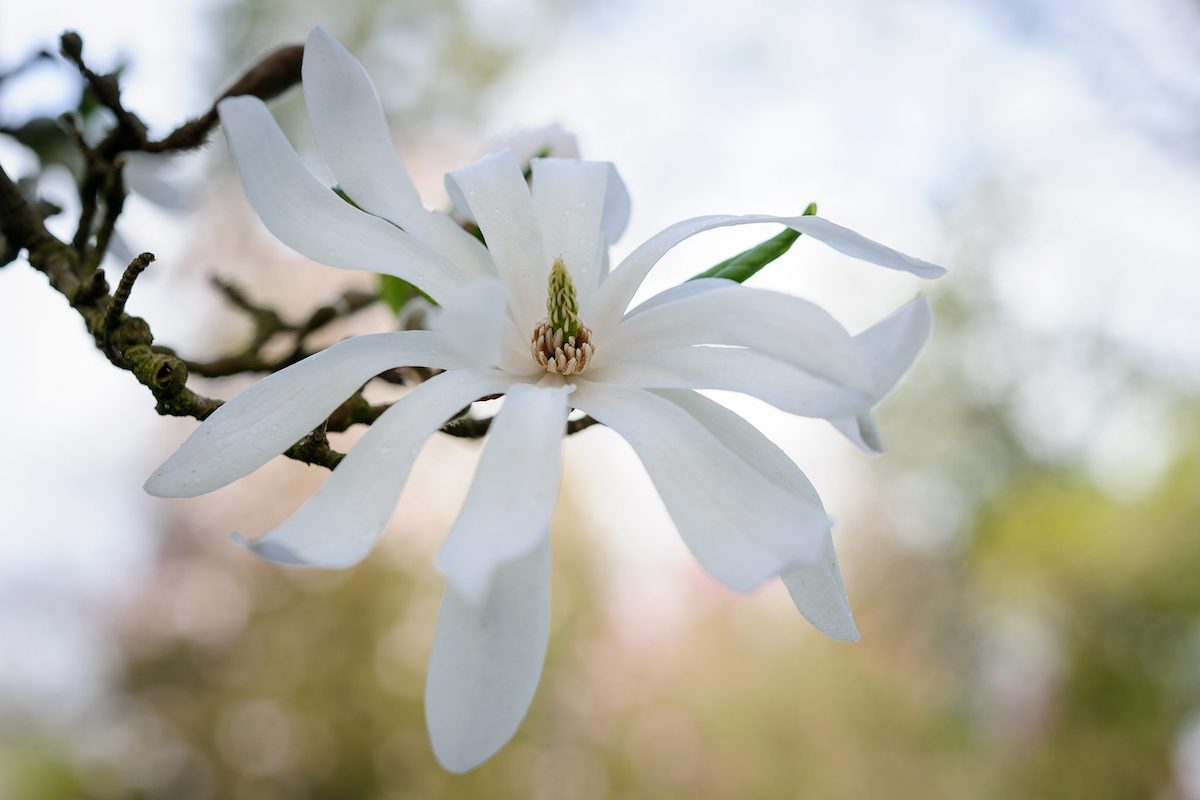
Nebula Magnolia (Internet source)
The flower culture of magnolia has a long history, and all of it has written records. Qu Yuan said in "Li Sao": " Drinking magnolias in the morning are like dews, and eating autumn chrysanthemums in the evening are like falling flowers. " Magnolia and chrysanthemums have been elegant plants since ancient times. Magnolia is a beautiful tree that symbolizes good luck and harmony, and is often planted in palaces, temples, etc. "Shu Yi Ji" written by Ren Fang of the Liang Kingdom in the Southern Dynasty records: "Mulan Island is located in Xunyang, and there are many magnolia trees in the river. In the past, King Wu Helu planted magnolias here to build his palace. In Qilizhou, there was Lu Ban who carved magnolias into boats. It is still in Zhouzhou today. The poet Yun Mulanzhou came from this. " It can be seen that Mulan was implanted in the palace during the Spring and Autumn Period, and the wood was used as a raw material for buildings and ships. Zong Minqiu of the Qin Dynasty said in "Ch'ang'an Zhi": " Afang Palace uses magnolia as beams and magnets as doors. " This further proves Mulan's early role in palace architecture. From palaces and temples to garden residences, it was Wang Wei of the Tang Dynasty who led the way. Because he loved the purple glow of Xinyi, he planted it all over his residence and used "Xinyiwu" as his companion. Li Xian's "Unification of the Ming Dynasty": " In the Five Dynasties, the Yanyu Tower was built in Nanhu. In front of the building, the magnolia flowers were clear and beautiful, setting off the green cypresses. They stood out from the building, which was also a wonder. " Wen Zhen, author of "The Chronicles of Changwu" in the Ming Dynasty Heng wrote: " Magnolia should be planted in front of the hall. Several of them are arranged in a row. When they bloom, they are like a jade garden and a green forest. It is the most beautiful. " Mulan is usually planted in the front, back, courtyard or around the balcony, perhaps because of the tall and straight plant. . After the Ming and Qing Dynasties, it was planted in the same garden with crabapples, peonies and osmanthus, and the meaning of it was "Jade Hall Wealth and Honor" in a pun of Bi De. As for magnolia and pine, bamboo and plum trees as Buddhist plants, they frequently appear in temple spaces. This can be traced back to the Tang and Song Dynasties. Perhaps it is because the magnolia tree is full of white flowers and has an impression of being pure and beautiful. It may also be because the magnolia tree is long-lived and is very suitable for temples, Taoist temples, etc. The sacred and solemn environment of religious places.

Magnolia at Faxi Temple in Hangzhou (Internet source)
There are many legends about Magnolia, the most impressive one is the story of Dali Magnolia. "Dianhai Yu Heng Zhi" records: " There is only one Dragon Girl flower. Zhao Jialuo practiced Taoism at Gantong Temple in Dali. The Dragon Girl turned into a beauty to test her. Zhao Qi used a sword to kill the beauty. The beauty fell into the ground and the flower grew ." Compared with the widely circulated Hua Mulan, I prefer the metaphor of Zhao Sheng's calmness in his arms and the dragon girl's bright and phantom flower. Since ancient times, beauty has been compared to flowers, and the fragrance of magnolia is impressive and elegant. For example, the ancients often used the soft white petals of Xinyi flowers to describe the whiteness and tenderness of women. "The Book of Songs Wei Feng Shuo Ren": " The hands are like catkins, the skin is like gelatin, the collar is like a caterpillar grub, the teeth are like gourd rhinoceros, the head is like a moth eyebrow, and the smile is clever. Beautiful, beautiful eyes look forward to it ." The relationship between magnolia and women is not only reflected in poetry and text, but also in visual images. Zhou Fang, a famous Tang Dynasty painting handed down from generation to generation, painted six ladies with fine brushwork. The ladies are graceful and graceful, playing with dogs, holding flowers, catching butterflies, or meditating. The hairpins in their buns are decorated with peonies, peonies, and peonies. Lotus, hydrangea and other branch flowers, as well as step flowers, the above flowers should be the mainstream flower aesthetics at that time, implying luxury. As we all know, the artistic aesthetics of the Tang Dynasty tended to be luxurious and bright, and the same was true for the popularity of flowers. The picture was mainly about people, but a single magnolia was outlined at the end of the scroll. The difference between the styles of magnolias and the flowers worn by ladies was obvious. Magnolias were very important to the aristocratic class at that time. The status should not be underestimated. As described in Bai Juyi's poem of the era, "As greasy as a jade finger painted with vermilion... a tree of girl flowers should be added." The exquisite jade-like color of the original magnolia flower perfectly echoes the beauty of a lady.

"Pictures of Ladies with Hairpins" by Zhou Fang of the Tang Dynasty
Literati and poets are fond of magnolia. This is probably due to the fact that the magnolia buds in spring have "hairy buds and long tips like pens". Therefore, magnolia and magnolia have another more literary nickname "wooden pen". To some extent, this is the cultural elite's view of the magnolia. The emotional reflection of the pen is the so-called "dream pen brings forth flowers". The "Zhilan Yushu" dialogue between Xie An and Xie Xuan's uncle and nephew in "Shishuoxinyu" uses elegant plants to compare outstanding talents with both political integrity and talent. Here "Zhilan" means Ganoderma lucidum and orchid grass, and there is no "Yushu" in the world. Wang Shimao of the Ming Dynasty described magnolia in "Xue Garden Yu Shu" as having " thousands of stems and stamens, but flowers without leaves. When they are in full bloom, they can be called Yushu ". Li Yu of the Qing Dynasty also said in "Idle Love Occasionally Sends a Magnolia" that " there is no jade tree in the world, please use this flower as one ", which has become a directional cultural endorsement.
Note: The author holds a master's degree in East Asian Art History from Boston University, a doctoral candidate in art history from the China Academy of Art, and an independent art writer. The original title of this article is "Yanfu Ancient Magnolia", and the subscript is added by the editor.
